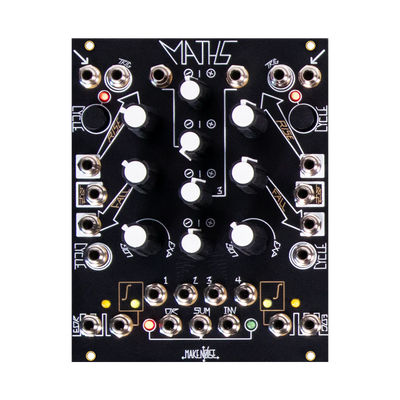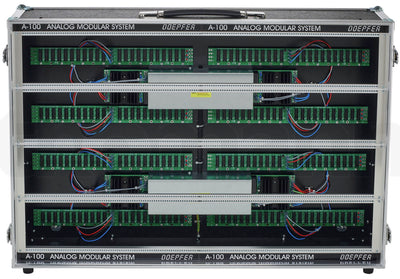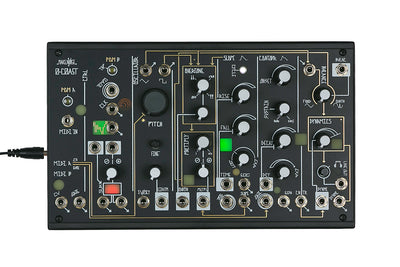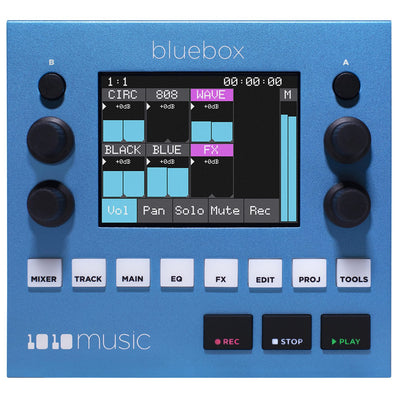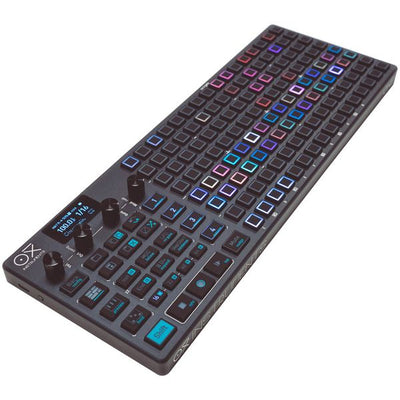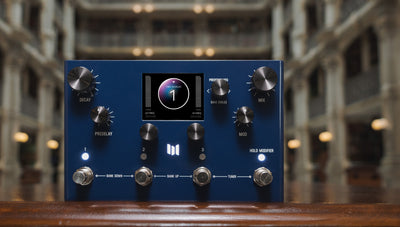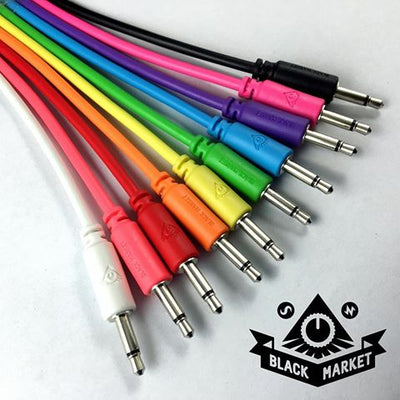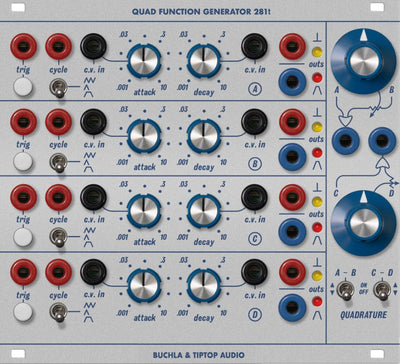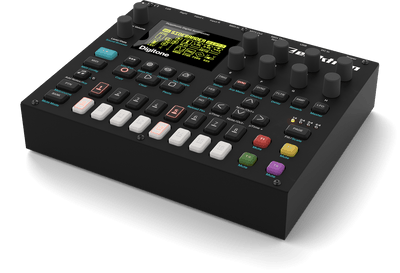|
Module A-197-3 is a control unit for RGB LED stripes. The LED stripe is glued e.g. to the inner edges of the cases A-100P6/P9/PMS6/PMS9/PMS12 to illuminate the modules and patching statically or dynamically. Especially during live events the dynamic illumination in sync with the sound is an eye-catcher. Each color (red, green, blue) has available a manual control for the background brightness and a CV input with attenuator that enables the dynamic brightness controlled by other control voltages of the modular system. For example three envelopes can be used which also control the loudness or filtering of sound processing modules. But even other control applications are possible, e.g. LFO, random voltages, clock/gate/trigger signals, sequencer, Midi-to-CV.
These are the most important features of the module:
- Control module for static or dynamic control of RGB LED stripes
- So far RGB LED stripes with 1m and 2m length have been tested. But with a sufficient external power supply even longer stripes should be no problem. It might be necessary to equip the three power transistors on the pc board with additional heat sinks to avoid overheating of the transistors.
- Manual controls for red, green and blue (small potentiometers without knobs)
- CV inputs with attenuators for red, green and blue (small potentiometers without knobs)
Notes:
The CV inputs are planned for CV signals (e.g. envelope generators, LFOs), not for audio signals with frequency selective processing like lighting consoles
The CV inputs are normalled, i.e. signal CVR is used also for CVG provided that no plug is inserted into the CVG socket, and signal CVG is used also for CVB provided that no plug is inserted into the CVB socket
- Control LED for each color
Notes: as the behaviour of the control LEDs differ from the behaviour of the LEDs used in the stripe the control LEDs should be treated only as a rough indicator, they do not exactly reflect the illumination of the LEDs in the stripe, to adjust the parameters in any case the LED stripe should be used and not the control LEDs of the module !
- The module has a trimming potentiometer available for each color for the adjustment of the basic brightness/offset of each color (to be able to adjust this parameter for different LED stripes). From the factory the trimming potentiometers are adjusted so that the LEDs of the stripe are just dark when the manual controls are fully CCW and no external CV signals are applied (or the CV attenuators are also fully CCW).
- Both the control electronics and the LEDs are very fast so that it's possible to realize even fast optical effects. To obtain e.g. a strobe effect all manual controls are fully CCW, all CV controls are fully CW and only CV input CVR is used. Then one obtains (nearly) white light pulses when short envelope signals or rectangle signals with small pulsewidth are used for CVR (e.g. the master clock signal).
- Supply via the built-in power supply of the case or external (wall-art) supply to avoid the additional current consumption for the LED stripes. To define the type of power supply (internal or external) for the LED stripe a jumper on the pc board is used.
(the LED stripes do not require a high quality supply like those built into the A-100 cases)
- The external +12V can be connected via a socket at the front panel (i.e. the additional supply is located outside the case) or via a pin header at the pc board of the module. In this case the additional supply has to be installed inside the housing by the customer. Sufficient electronic knowledge is required to install the additional power supply inside the housing ! In case of doubt please use the external power supply outside the housing connected to the socket at the front panel.
- Required max. current with 1m RGB LED stripes: about 800 mA @ +12V (all three colors full brightness)
- The top left edge of the front panel features a gap for the lead-trough of the LED stripe cable. Therefore the module has to be mounted at the left edge of the case: top left if only the top edge of the case is used to glue the LED stripe, middle left or bottom left if the LED stripe is glued like a reverse "U" to three edges of the case
- The pc board is equipped with a pin header which can be used to connect the standard LED stripe that comes with the module
- In addition the pc board is equipped with a second pin header with 1/10" grid that can be used to connect the LED stripe that comes with the module or another suitable LED stripe supplied by the customer. The corresponding female connector with 30 cm long cables with open ends for free wiring is included.
- The module is suitable only for LED stripes with 12V power supply and common anode (+12V) with 4-wire cables (+12V/R/G/B).
- A suitable 1m long RGB LED stripe is added for free. Due to possible problems during installation (e.g. improper glueing/removing or folding of the stripe) it is not covered by warranty but should be treated as a free add-on.
- To install the LED stripe at least 10 mm width at the edge of the case have to be left and the substrate has to be suitable for the self-adhesive stripe (i.e. even and free of dust/grease). For example the A-100P6/P9/PMS6/PMS9/PMS12 are suitable. The aluminium rails of the case should be cleaned befor the LED stripe is sticked on the rail. The low-cost cases (A-100LCx) are not suitable without modifications because the rim is too small and the self-adhesive stripes do not stick very good at the raw wood or the coating of the vintage versions. One would have to modify the low-cost cases e.g. by adding a metal or plastic band with at least 10 mm width from the hardware store to glue the LED stripes.
- An external 12V supply has to be ordered separately if required (5.5/2.1 mm connector, plus = center). A power supply with 1A is recommended for the 1m LED stripe.
The following document shows the positions and functions of the jumpers, connectors and trimming potentiometers of the module: A197_3_trimming_potentiometers_and_jumpers.pdf
The first prototype of the A-197-3 built into an A-100P9 can be seen in these videos which have been recorded during a workshop in December 2018 at SchneidersLaden in Berlin:
https://www.youtube.com/watch?v=II5KIKVllB0&list=PLTnE9FqlS9Qg1ooh4-lqTc5ECOtVu38ye&index=2&t=0s (starting about at position 6:40)
https://www.youtube.com/watch?v=K_20o-2Z3wA&list=PLTnE9FqlS9Qg1ooh4-lqTc5ECOtVu38ye&index=3&t=0s (starting about at position 28:45)
|



